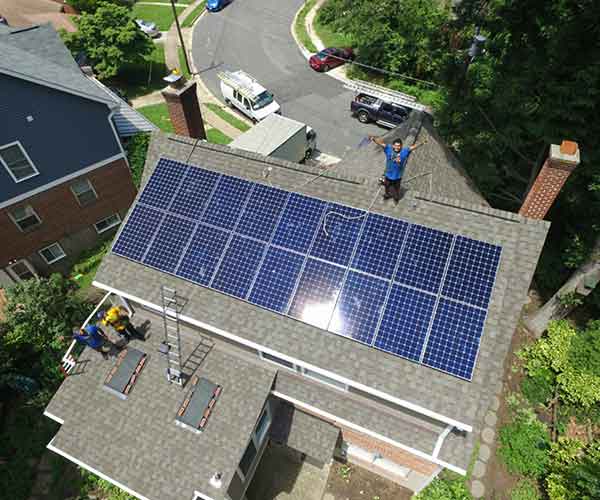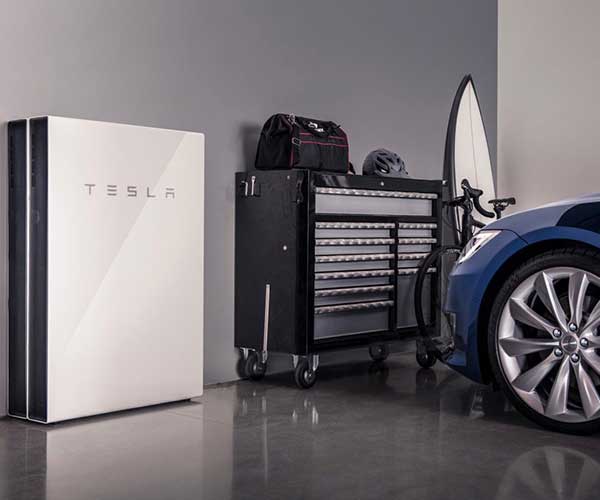Battery technology advances are changing the energy landscape. As solar storage capabilities increase, residential and commercial customers have more energy storage options.
Unfortunately, lithium-ion batteries are still relatively expensive at this time, but some solar customers are preparing by installing a solar panel system with future storage capabilities.
If the solar system is designed with this in mind, batteries can be added later relatively easily.
It is more difficult and costly to add battery storage in the future if the solar system is not battery ready. The same solar panels can be used but it requires replacing or adding additional components.
If you are installing a solar system and want the option of battery storage in the future, it is helpful to plan accordingly.
Upgrading a solar system to have battery storage
If a solar system is not battery ready and storage capabilities are added, it is more costly. Either the solar inverter would need to be replaced or an inverter would need to be added for an AC-coupled solution.
The latter does result in some efficiency loss but likely has a lower upfront cost compared to replacing the inverter completely.

Henry Portillo (peak), Tulio Guzman and Carlos Cardona of Edge Energy celebrate an 8 kilowatt solar installation in Arlington, VA /Power for the People VA
Installing solar components that are battery ready
The inverter in a grid-tied solar system converts DC power from the solar panel into AC current for use in the household. For solar systems with battery storage, the inverter needs to also be able to convert the power back to DC current that can be stored in the battery.
Many inverters can perform the former task but not the latter.
Choosing a solar system with an inverter that has battery storage abilities is one way to prepare for adding batteries in the future. This would enable the solar system to operate only as a grid-tied solar panel system until batteries and the additional components are added.
In addition to reducing overall solar equipment costs, the labor expenses associated with adding storage are likely less because it is a simpler and quicker project.
Solar Energy Storage Options
There are two main types of solar batties: lithium-ion and lead-acid batteries. Lithium-ion batteries have a higher density and longer cycle life, but a higher upfront cost.
Lead-acid batteries require more maintenance and have a shorter cycle life, but have a lower cost.
If you install batteries now, there are a few factors to consider when purchasing batteries. The capacity of the batteries is the total amount of power that the batteries can store.
The power rating indicates how much power a battery can provide at a given time. A high capacity battery with a high power rating allows you to store a lot of energy and release it quickly.
The depth of discharge refers to how much of the total charge needs to be retained for optimum performance. Battery manufacturers typically specify this, enabling battery owners to plan accordingly.
If a 10 kWh battery has a depth of discharge of 80%, then 8 kWh can be consumed before the battery needs to be charged.
Why Install Batteries?
Unless a solar system has battery storage, the capabilities of the solar system are limited during power outages.
Grid-tied systems are designed to shut down during blackouts, even when the sun is shining. This is a design feature of solar energy systems and is required to prevent workers from getting electrocuted while performing repair work on power lines.
Installing batteries also enables the use of solar energy when the sun isn’t shining and is referred to as behind-the-meter storage.
Some utilities charge higher rates during peak power consumption, and batteries allow customers to use stored solar energy instead of more costly grid power. This option is becoming very popular in Hawaii and California, where this arrangement is more lucrative than in other locations.

Rhonda ‘Honey’ Phillips, alongside the Tesla Powerwall battery and inverter connected to solar panels in her Middletown Springs, Vt., yard. AP Photo/Dave Gram
Falling Battery Costs Favor Renewable Energy
Lithium-ion batteries have fallen in cost by 80% since 2010, benefitting the electric vehicle and renewable energy storage market. With falling battery costs, more home and business owners are considering solar energy storage options.
More affordable energy storage helps resolve the issue that solar and wind energy are intermittent sources of energy.
According to Bloomberg New Energy Finance’s forecast – New Energy Outlook 2018 (BNEF), falling battery costs will have a big impact on the energy landscape and favor renewable sources across the board.
“Wind and solar are set to surge to almost “50 by 50” – 50% of world generation by 2050 – on the back of precipitous reductions in cost, and the advent of cheaper and cheaper batteries that will enable electricity to be stored and discharged to meet shifts in demand and supply. Coal shrinks to just 11% of global electricity generation by 2050.”
Although battery costs have fallen considerably, they still aren’t affordable for many home and business owners. Even if lithium-ion solar batteries don’t quite fit the budget now, planning for a solar system with energy storage might be a good idea and save money in the long run.













Comments